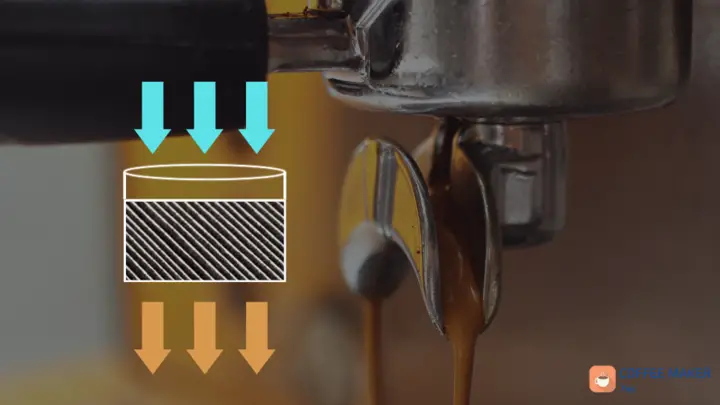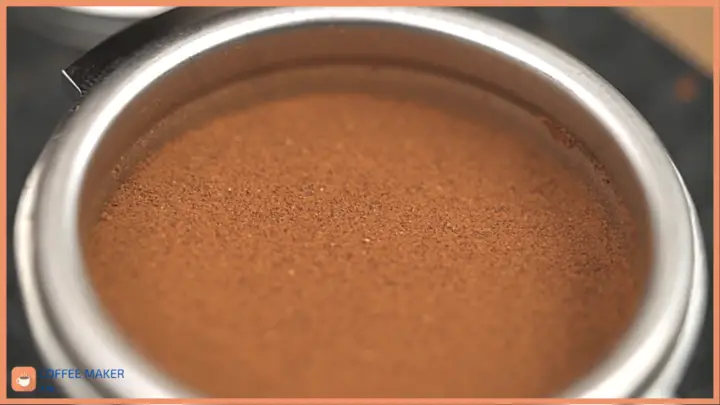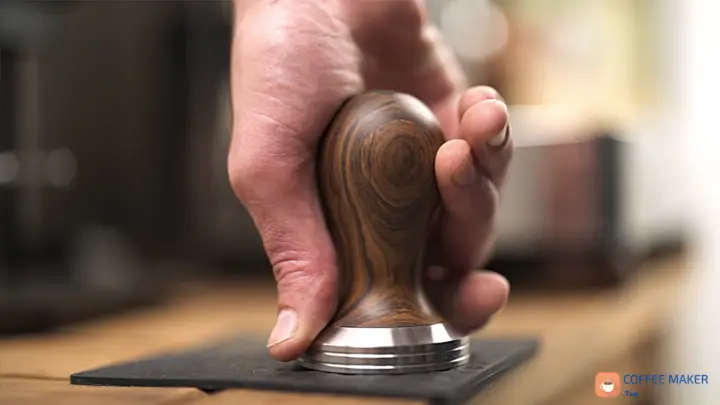If you have an espresso machine, you probably tamp the coffee before putting the filter holder in the group. We have always believed this action is essential to preparing a good espresso, but why do you do this?
To extract the maximum potential from the coffee, we need to create a resistance to the passage of water through the ground coffee. Doing this will increase the water pressure during extraction, which will be around 9 bar.
When we tamp the coffee in the filter holder basket, we will have created a space between the coffee and the brewer group with a tamper, horizontal coffee bottom. This gap is filled with water, and as the pressure increases, the water will pass through the ground coffee evenly in a columnar shape, which is very important for the coffee to be extracted correctly.

How to tamp coffee correctly
To tamp coffee correctly, we inevitably need a tamper. However, the question now arises, will any tamper do? Before buying a tamper, you first need to know the size of your machine’s filter holder.
Most commercial machines use 58-millimetre filter holders. Some domestic machines use 57-millimetre filter holders and smaller models, such as the Flair, have 46-millimetre filter holders.

Are tampers with a convex base suitable?
I don’t know why there are tampers with a convex shape at the base. I do not recommend this because it creates different densities in the coffee puck, which will impair the desired water column.
Are plastic tampons suitable?
Many home espresso machines (Delonghi Dedica) come with a plastic tamper included, but these are very light and unstable, so I recommend you always buy a metal one.
A plastic tamper is difficult to handle due to its low weight, leading to uneven compaction. In addition, it complicates the precision in creating the correct pressure on the coffee.
What is the best tamper for coffee?
There are several types of tamper, some more modern, with different technologies, materials, and shapes. However, in this article, we will talk about the traditional tamper.
The most important thing when choosing a tamper is that it fits comfortably in your hand, so the most recommended ones are the traditional ones. It is also important that they are made of stainless steel so that they have a good weight and we can tamp the coffee easily.

How to use the traditional coffee tamper step by step
Although tampering the coffee well in the filter basket is something that comes with practice, I will give you a series of basic tips to help you improve your technique.
- Add the coffee to the basket as evenly and evenly as possible.
- We need to hold the tamper comfortably as if we were holding a torch. We will leave our thumb and index finger touching the tamper’s edges to feel the portafilter’s basket (picture above).
- Then we will get into position with the body parallel to the filter holder, the arm vertical and the elbow at a 90-degree angle.
- Nowadays, after many experiments, we know that we have to apply just enough force to feel the coffee compact and no more.
- When we start to press, we feel that the tamper goes down until it does not go down anymore, and we feel resistance; that is enough. All the air between the ground coffee has been removed.
- Turn a little bit with the fingers that we left out so that we can feel if we are pressing level.
Be careful not to put too much force on your thumb and tilt the tamper. By pressing at an incline, we will tamper one side more than the other. If this happens, the water will find more space (less resistance) on one side of the coffee puck and flow through.
This problem is called channelling. We will have an uneven extraction with these differences in the coffee puck. Where the channel is produced, there will be an over-extraction, while on the other side, there will be an under-extraction because the necessary amount of water did not pass through.
Other tips to keep in mind when using the tamper
- Do not hit the filter holder with the tamper, as this can create cracks in the coffee puck, and the water will pass through, creating channels.
- If you see a little coffee left in the tamper after pressing, it is because the base was wet, so always keep it dry.
- Once you have tampered the coffee, that’s it; it’s no use doing it twice or more times. One single movement and feeling that the coffee doesn’t move anymore is enough.
- At the same time, if you realise that the puck is tilted to one side, it is not useful to tamper more on the other side, as they will have different densities, and channels will likely be created again. You must do it in one single movement as evenly as possible.
- To avoid discarding the coffee, you can break the tablet, transfer it to another container, remove the lumps with a tool, and try again.
